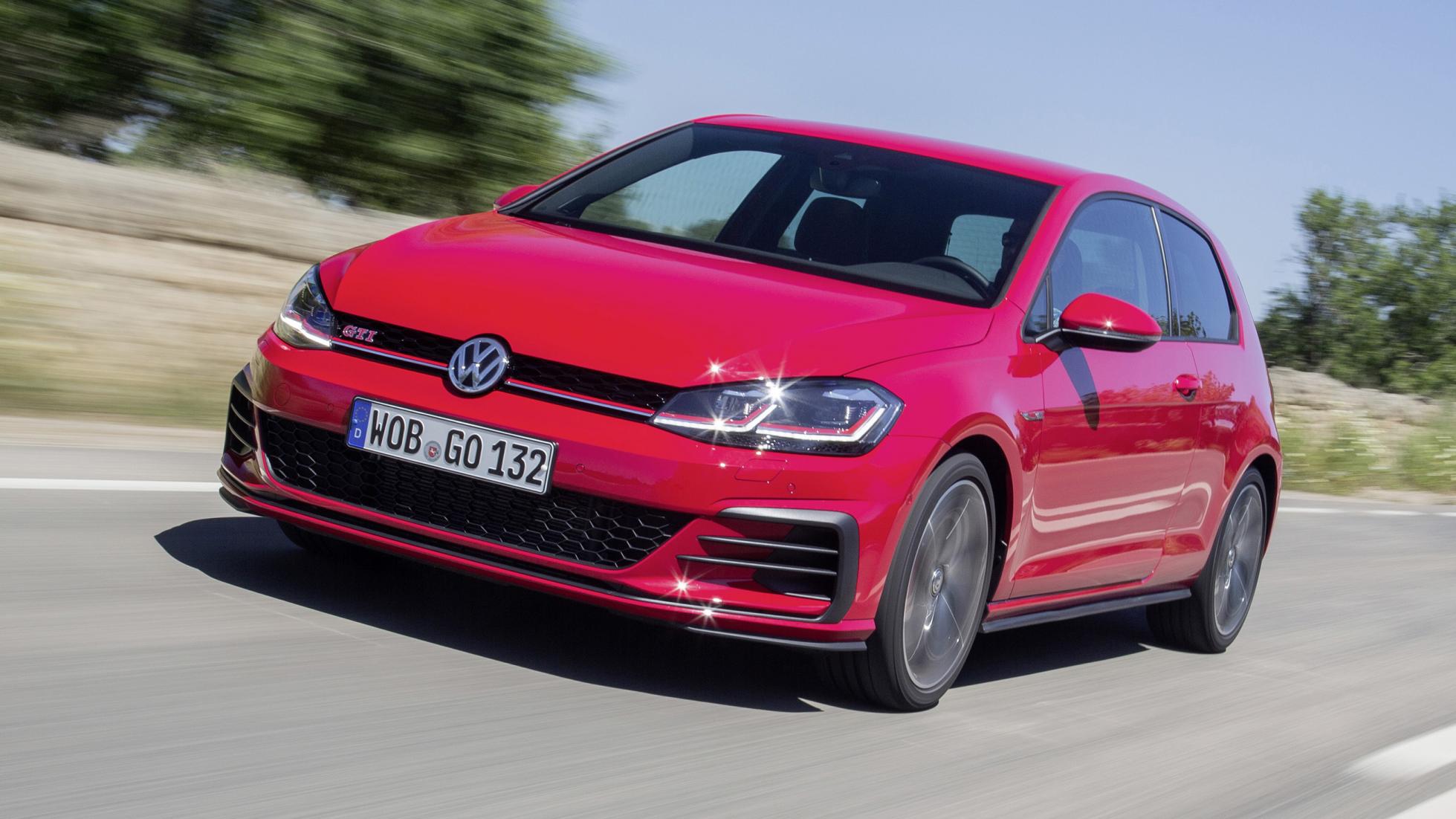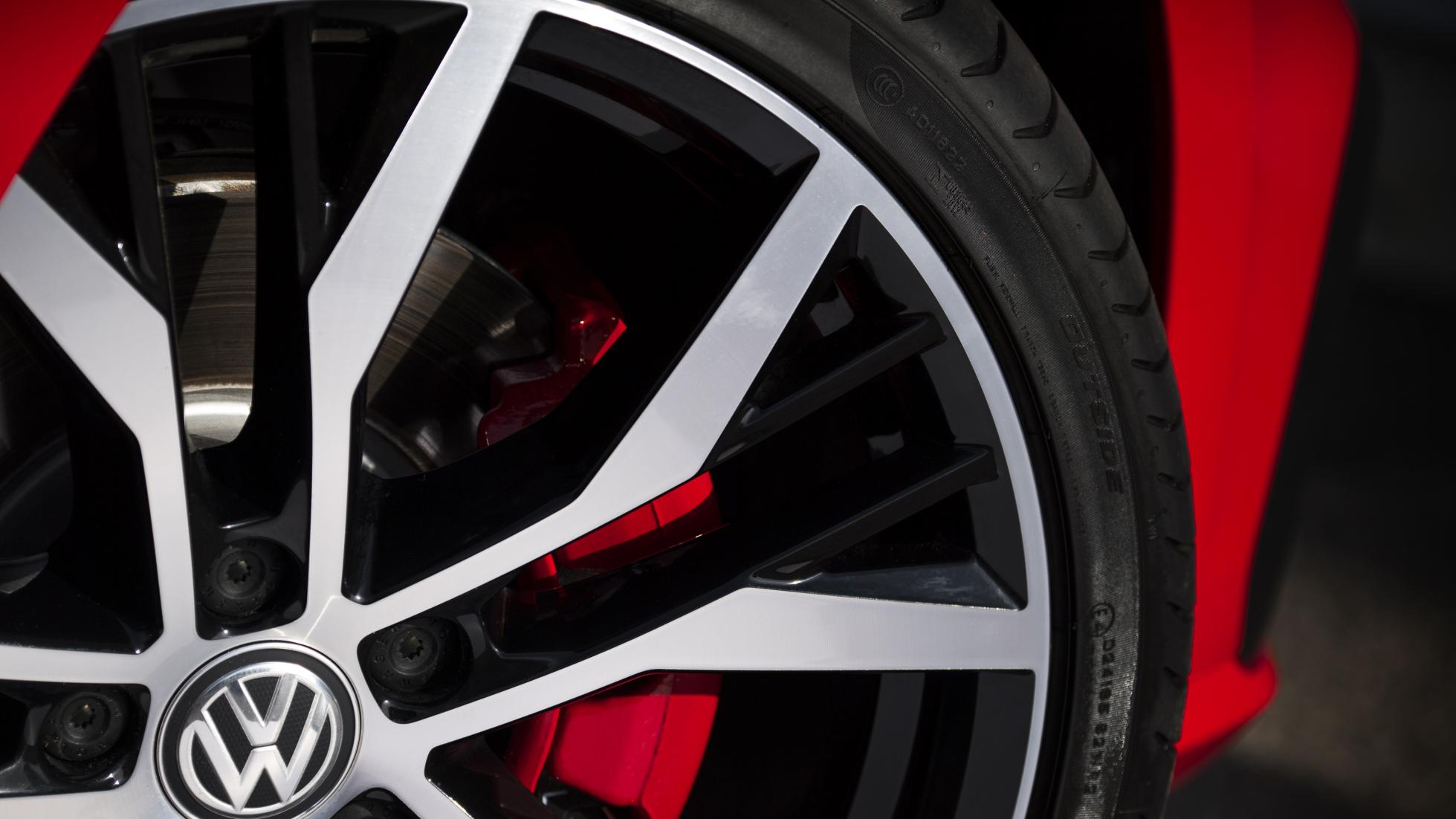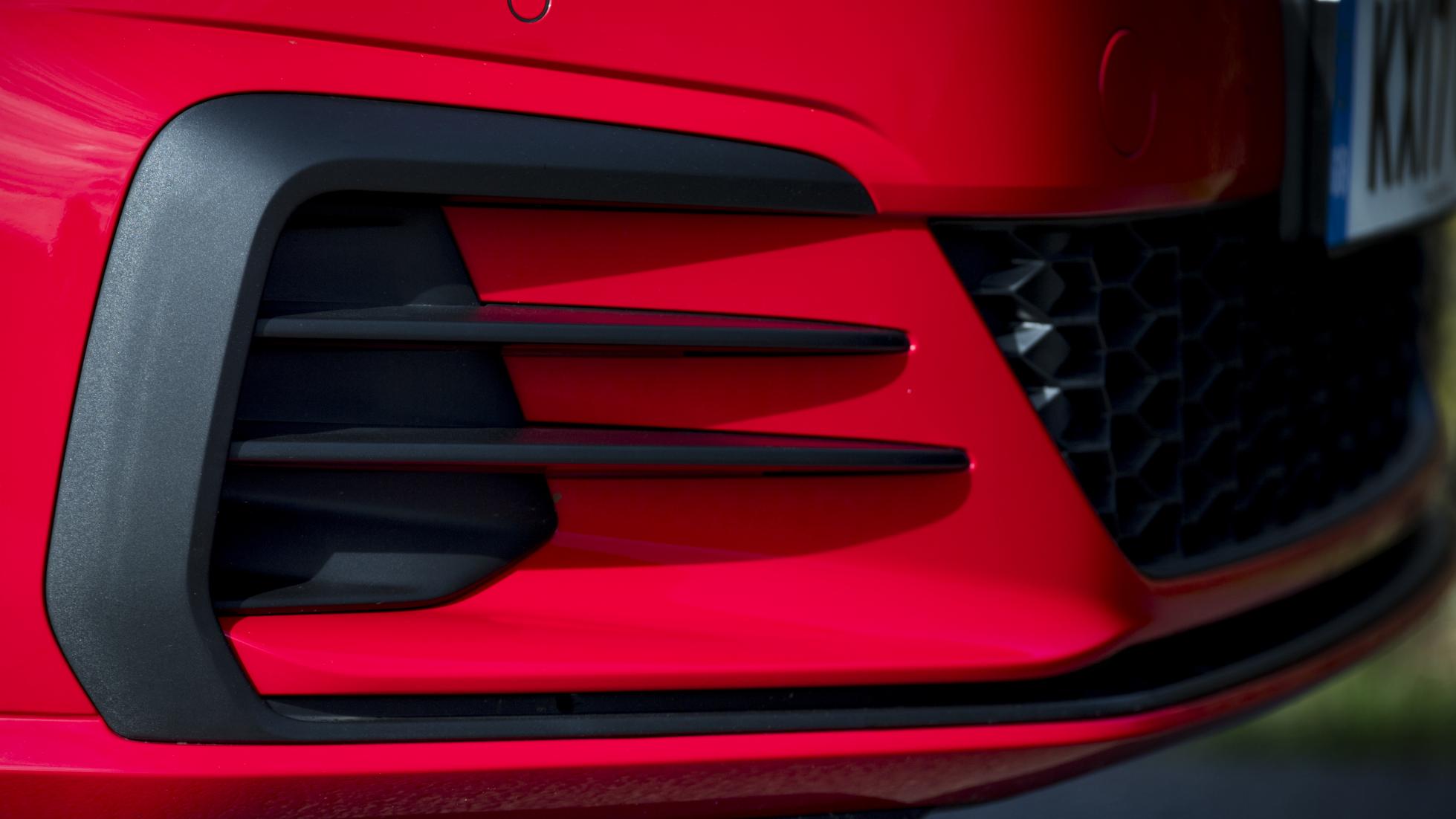TG's Volkswagen Golf GTI review
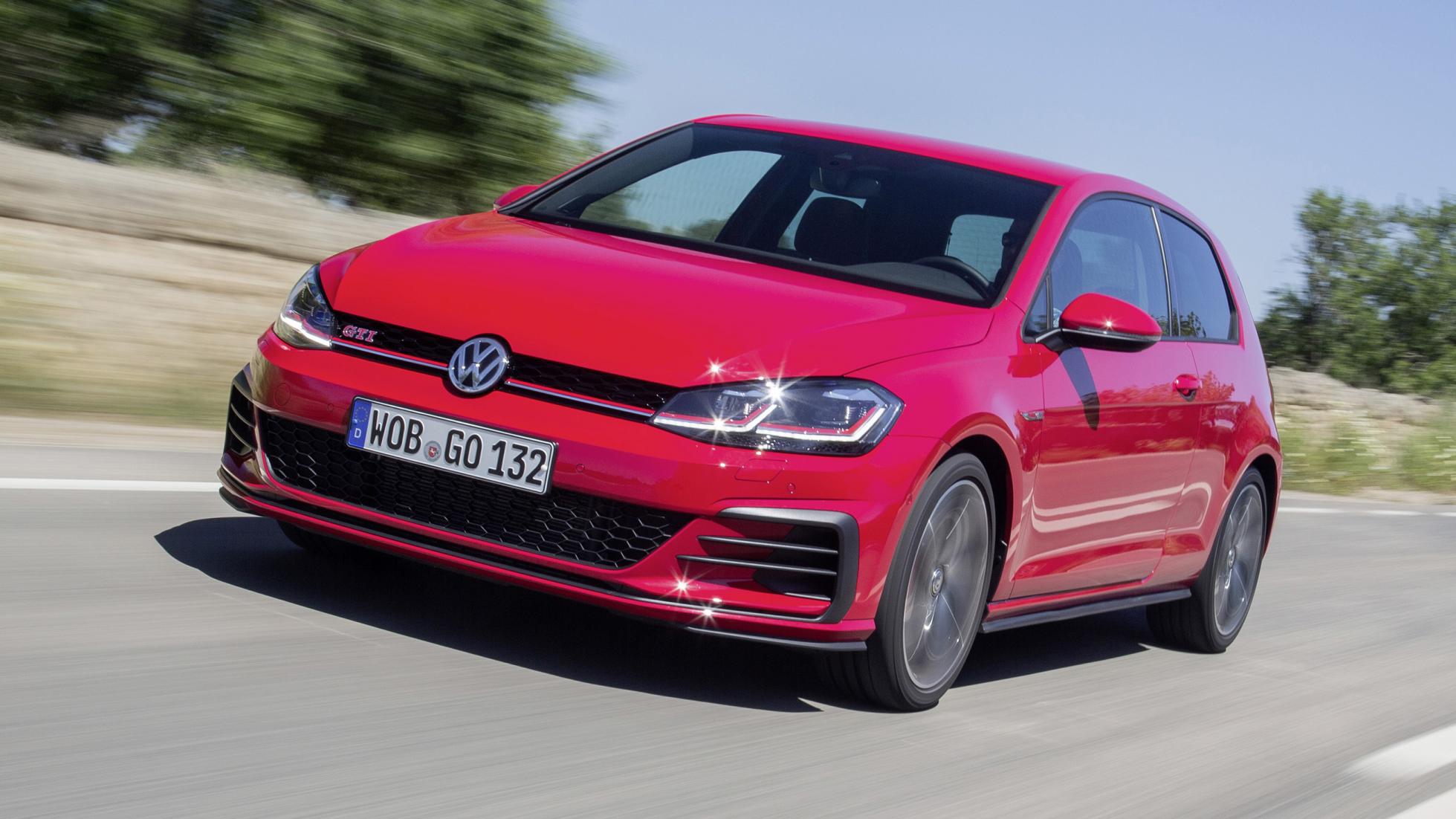
OVERVIEW - What is it?
The quintessential hot hatch. Rarely the most exciting, most engaging or best-handling car in its class, but usually the most sophisticated and desirable, the Golf GTI has been around in some form or another since the mid-Seventies, when it was dreamt up by a team of just six blokes working after-hours. It was an instant hit - VW planned to build 5,000 of them, but ended up selling six times that in the space of just one year.
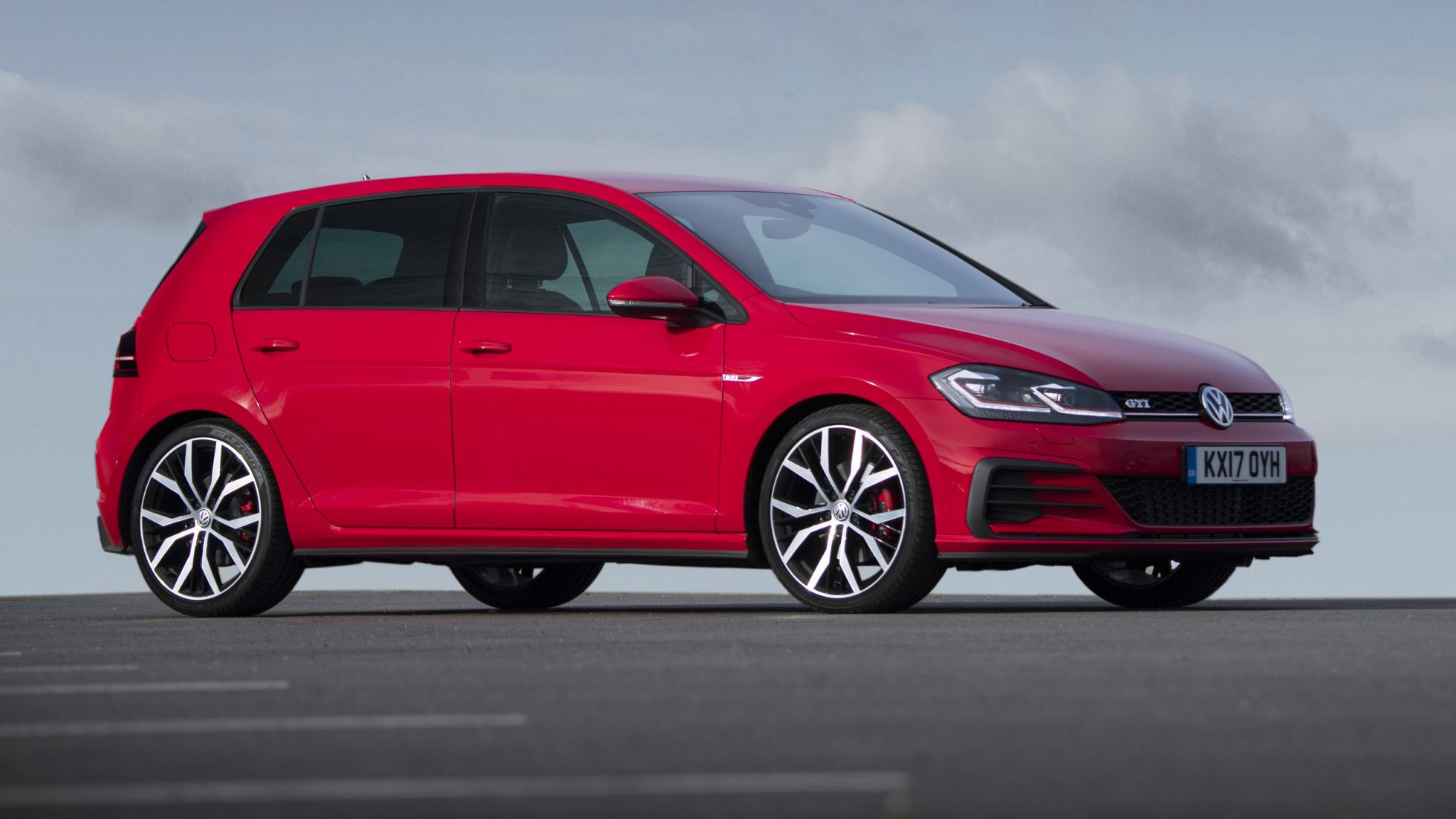
Now 45 years and more than two million GTIs later, the world is gearing up for the launch of the eighth-generation Golf, with its mild-hybrid powertrains and touchscreen-heavy interior. You can read our full review by clicking on these words.
There will be a new, Mk8 Golf GTI, of course, based on the same platform and using the same engine, but the Mk7 GTI isn’t quite dead yet. You can still buy (and indeed spec) one. And there are still many, many reasons why that’s exactly what you should do.
Released in 2014 then updated in 2017, the Mk7 GTI followed the rather good Mk6 and incredibly good Mk5 (the less said about the Golf Mk3 and Mk4 the better…). It’s based on the same ‘MQB’ platform as various Skodas, Seats and Audis and, yes, the new Golf.
Back when it was new you had a choice of GTIs - there was the standard car, then there was the ‘Performance Pack’, which added power and a trick diff’. Today the Performance Pack is the base car, the car reviewed here, but you can upgrade to the marginally more hardcore TCR (of which you can read a full review right here) if you have the means.The manual gearbox died when WLTP emissions rules kicked in, so now all GTIs are DSG only. The three-door is dead too, but that’s ok, as the five-door is the one you wanted anyway.
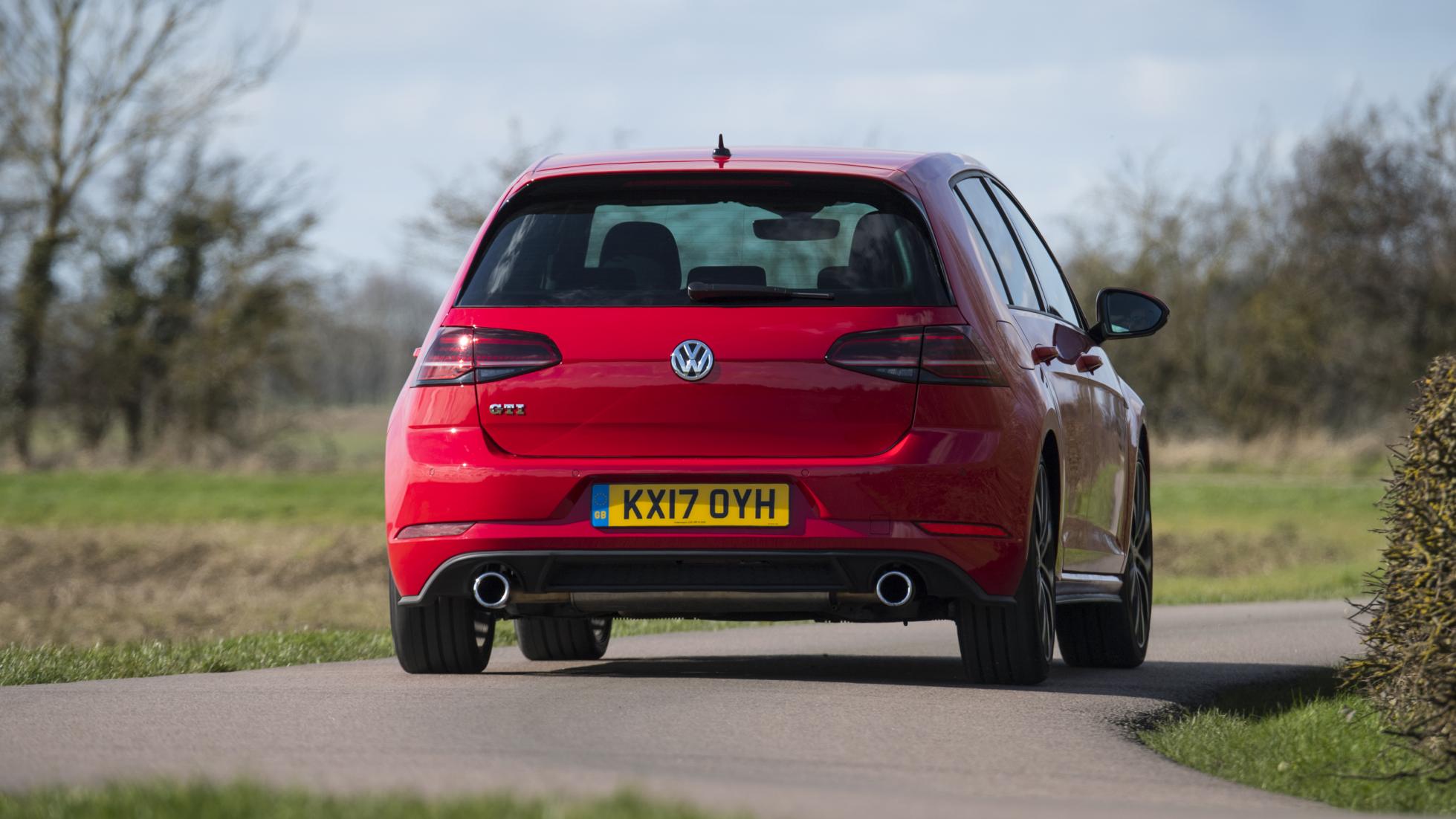
DRIVING - What is it like on the road?
The Mk7 GTI uses the same 2.0-litre petrol engine as literally every other even moderately brisk VW. You can find it in the Skoda Octavia vRS, the Leon and Ateca Cupra, Audi S3 and SQ2 and of course the Golf and T-Roc R among others. In the GTI Performance it produces 242bhp (in the Cupra it makes as much as 345bhp).
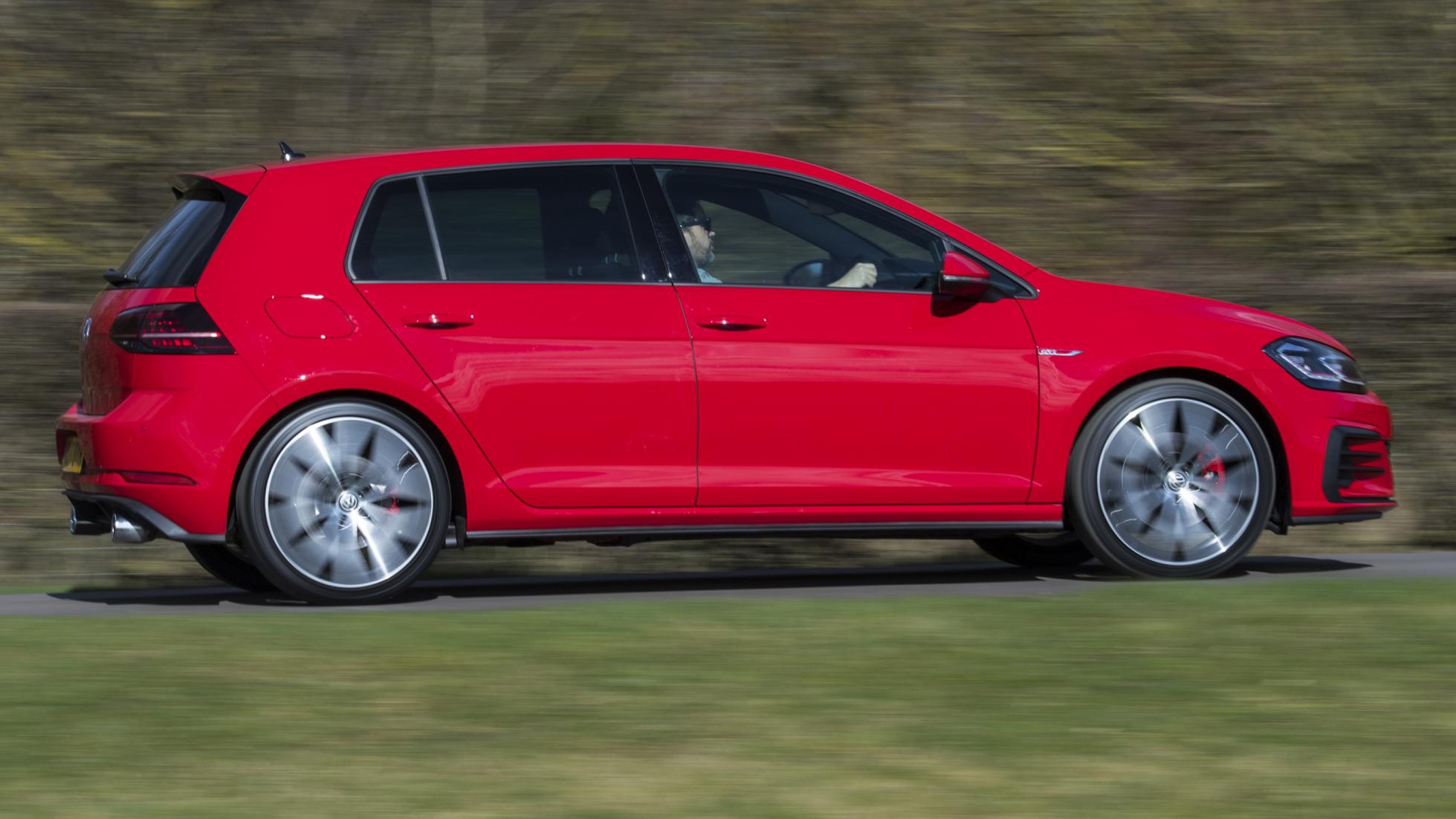
While the Mk7 GTI was certainly quick enough when it was launched five years ago, nowadays when it comes to outright power it’s some way behind similarly-priced rivals such as the 270bhp-odd Ford Focus ST, Renault Megane RS, and Hyundai i30N. But despite being down on power, it’s still quick enough - 0-100kph takes 6.2 seconds and it has a top speed of 249kph.
This is a very good engine - no wonder why VW sticks it in so many different cars. But it’s capable of so much more than what’s on offer here - drive a 300bhp-plus Golf R or Leon Cupra and you’ll soon see - meaning the GTI at times feels arbitrarily hamstrung. If you haven’t driven or been in a Cupra or Golf R then you won’t notice, but if you have there’s really no going back.
Of course those cars are all-wheel drive, while in the GTI power is sent to the front wheels only via a largely fine seven-speed DSG gearbox (the six-speed manual, our preferred transmission, is no longer available) and clever electro-hydraulic diff, which gives good turn-in and grip.
Our test car had the adaptive dampers, meaning the ride is supple even on those chintzy 19-inch alloy wheels.
The GTI is fun to drive, make no mistake, arguably more so than the heavier all-wheel drive Golf R, but it’s hardly the most engaging car in its class. It grips and goes and feels light on its feet, but the Ford, Hyundai and Megane are livelier and more engaging at road speeds. What they lack, though, is the Golf’s quality and day-to-day comfort, its feeling of sophistication and classiness. They simply aren’t as desirable.
If you want to read about the slightly more hardcore, more powerful Golf GTI TCR, click on these words.
It's easy to see why this is many people's default hot hatch
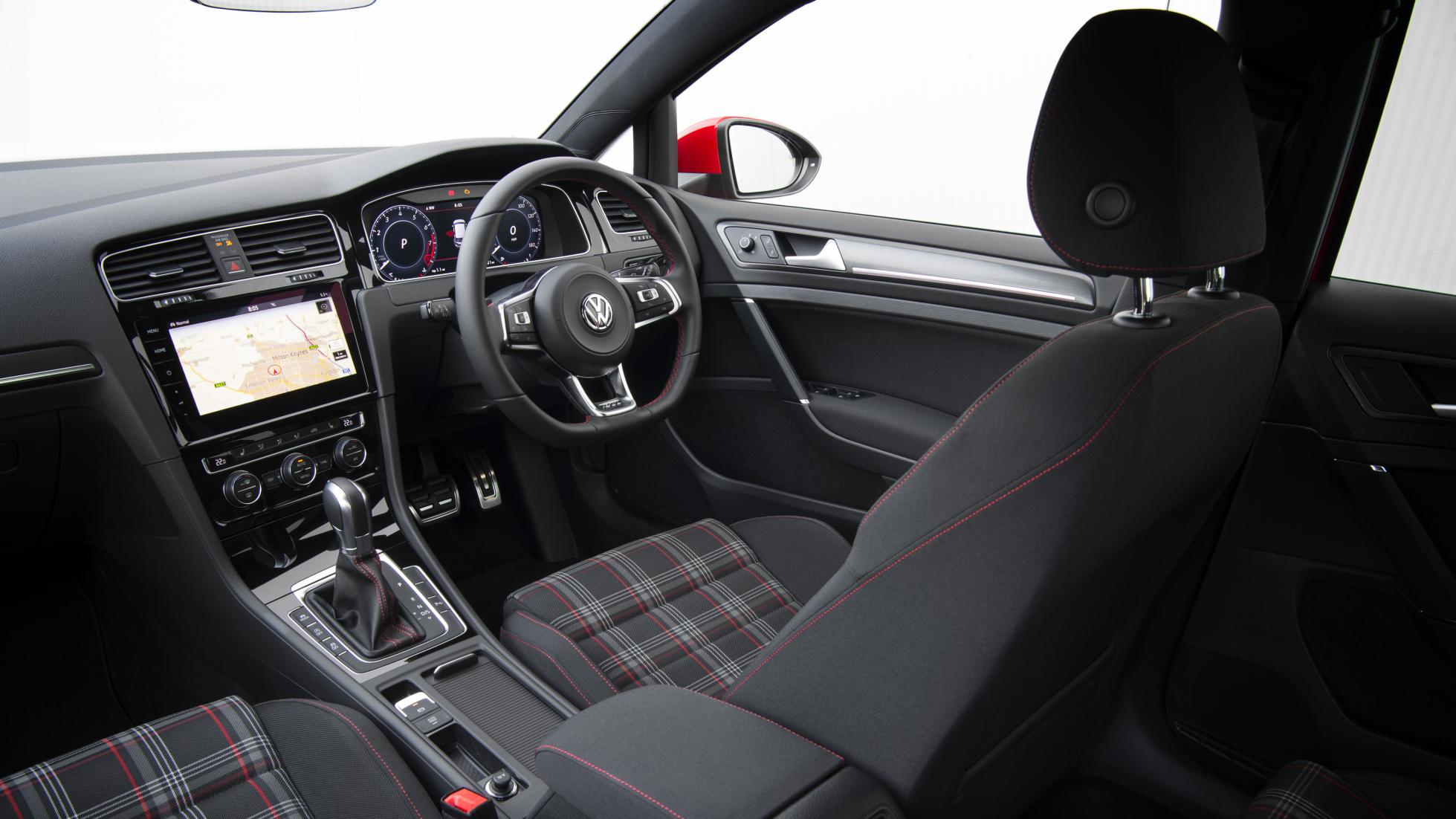
ON THE INSIDE - Layout, finish and space
Sitting in what is essentially the ‘old’ Golf - for production of the new Mk8 has already begun - really highlights ergonomic issues presented by the touchscreens and touch-sensitive surfaces/buttons the car industry is moving towards.
See, the Mk7’s interior is tremendous - it might not look as modern as the Mk8’s but it’s very straightforward to use on the move. For the Mk8 VW replaced most of the Mk7’s physical switchgear with touch-buttons. From the sunroof to the headlights - everything is now either controlled through a touch-sensitive button, or through the infotainment system. Doing it this way might have given the Mk8 Golf a better-looking interior, but it sure as hell hasn’t given it an easier-to-use interior. Ergonomically-speaking, if not technologically or aesthetically, the Mk7 Golf’s interior is better.
Quality is beyond reproach, of course, and there are enough GTI-specific bits to make it feel special in here. The steering wheel, for example, is one of the best fitted to any ‘normal’ car, while the seats are trimmed in traditional tartan upholstery. As the manual gearbox is dead, there is no golf-ball gear lever, which is a shame.
For the 2017 facelift VW upgraded the Golf’s infotainment system - the standard eight-inch system is just fine, no need to upgrade, as it keeps a physical volume knob and still gets Apple CarPlay/Android Auto. The digital instrument cluster isn’t quite as good as Audi’s Virtual Cockpit, but all the info you need is clearly displayed and the screen itself has good graphics.
Space is good - the boot is a decent size, and two adults can sit comfortably in the rear-seats.
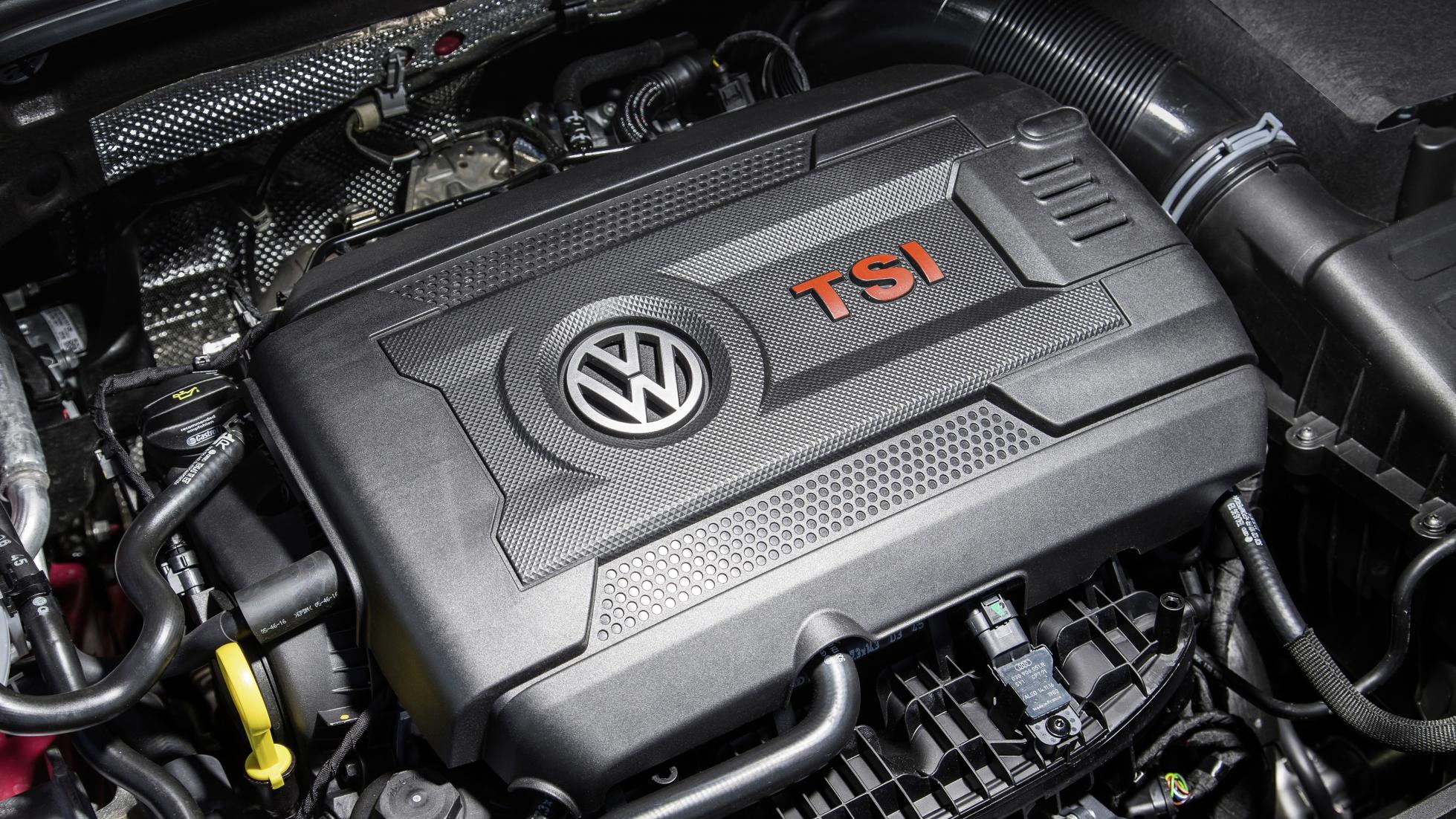
OWNING - Running costs and reliability
It won’t be long before VW takes the Mk7 Golf GTI off sale, so if you want one you’d better hurry up. Prices start at £33,180 for the GTI Performance Pack, making it pretty expensive for what it is - the Ford Focus ST, Renault Megane RS and Hyundai i30N all start at under £30,000. The TCR costs £37,830, making it more expensive than the all-wheel drive, 300bhp-odd Golf R.
At least you don’t need to spend much on options - the GTI Performance gets pretty much everything you might want as standard, from adaptive cruise control, to electric/heated everything via a CarPlay-compatible infotainment system. We might consider adding the Dynamic Chassis Control (DCC) for £875.
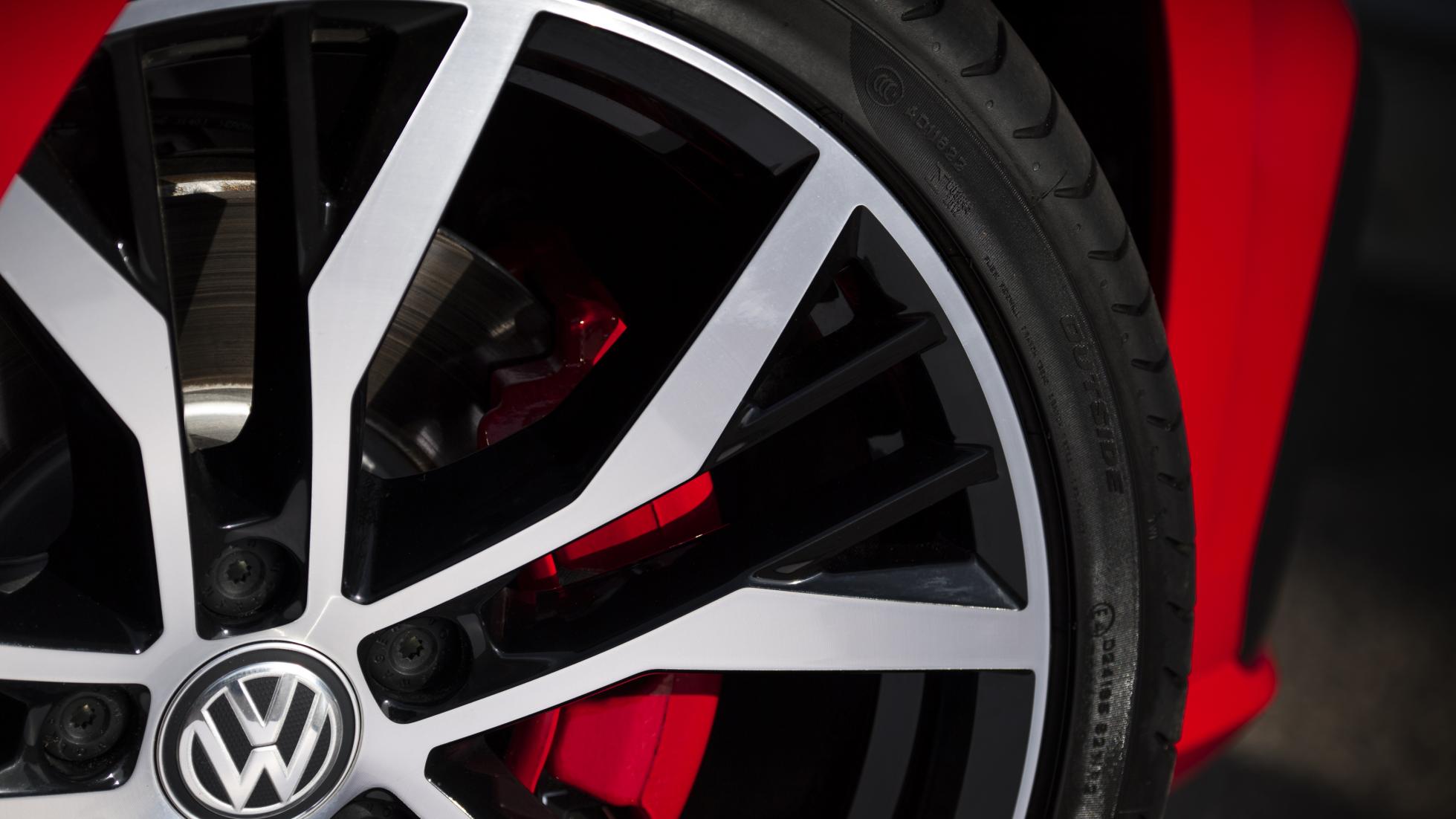
VW claims 37.7mpg (7.5 litres/100km), which is about right (and better than what you’ll get from the Ford or Hyundai), but if you spend lots of time driving around town expect to average nearer 30mpg (9.4 litres/100km). 143g/km of CO2 isn’t bad either.
The warranty is three years/60,000 miles.
VERDICT
Even though it’s effectively an outgoing model, there’s still a lot to like about the Mk7 Golf GTI. Yes rivals are broadly cheaper, more powerful and more fun to drive, but that’s business as usual. None can match the GTI for desirability and quality - it’s a hugely classy, class-less object that is hard to beat as a day-to-day car. If you’re not bothered about being seen in last year’s model, look out for deals on these things as production tails off…
Overlook the fact it’s so good that it’s almost joyless: the latest Golf GTI is very desirable indeed
| FOR | AGAINST |
| Quality, all-round professionalism, ownership experience | Not as exciting to drive as some rivals |
| SCORE | 8/10 |
